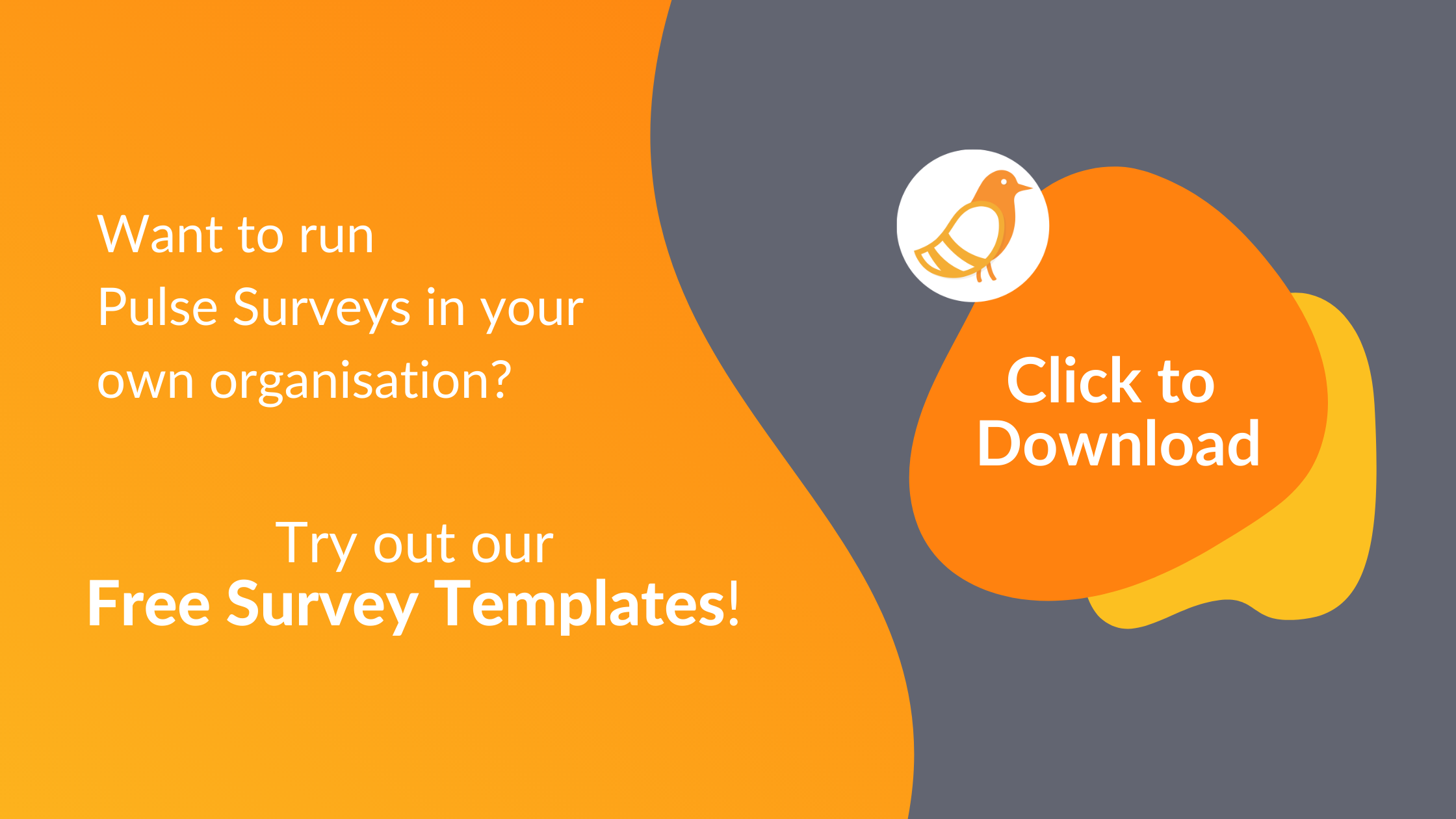
Table of Contents
Early in my career, I had a manager who would regularly check in with me by asking “How’s it going?” when we had lunch, just before meetings, or in the mornings when we were the first few in the office.
I appreciated the sentiment, but on hindsight, I realised that we never really addressed issues related to work. Because the question was posed to me in a social context, I responded in a social manner. I spoke generally about personal and task-related issues, but rarely brought up actual worries I had related to work or the company.
When the issues I had finally escalated, my manager expressed surprise that I had never brought them up, considering how regularly she spoke with me. It is only recently that I’ve realised time spent talking is not equal to time spent in effective engagement.
As a manager, how do you stay connected with your team and measure employee sentiment in a way that’s purposeful, insightful, and actionable?
Enter the employee pulse survey
Pulse surveys are short, simple, flexible, and easy-to-implement surveys designed to quickly collect and analyse data about employee sentiment in the workplace. Think of them as similar to a pulse check—instead of a heartbeat, you’re measuring the health of your employees’ satisfaction.
Regular pulsing creates trend data that helps identify shifts in employee wellbeing and motivation, but ad hoc pulsing can also be useful in garnering actionable insight on more specific topics.
For example, you can use pulse surveys to evaluate the impact of your company’s new remote working arrangement, e-learning initiatives, or changes in your health policy. You can even use pulse surveys as a way to make post-mortems less painful.
It’s important to keep in mind that pulse surveys are meant to complement, not replace, the more extensive annual company-wide employee engagement survey. They’re like the regular check-ins my manager used to have with me, but with better structure and more targeted purpose.
How to craft effective pulse survey questions
In addition to these 5 tips we’ve outlined on how to craft effective survey questions, here are some others:
Phrase questions as specifically as possible
Pulse survey questions that are too vague can weaken responses—your employees can’t answer you if they’re confused about what you’re asking.
If you’re pulsing about remote work, don’t ask “How do you feel about the current remote work arrangement?” Instead, be specific about which aspect of remote work you’re referring to.
Example 1: I have the necessary technologies to help me collaborate and stay connected with my manager and team while working remotely.
- Strongly Disagree
- Disagree
- Somewhat Disagree
- Somewhat Agree
- Agree
- Strongly Agree
Example 2: Working remotely has made _____ on my daily productivity.
- No impact
- Positive impact (please elaborate)
- Negative impact (please elaborate)
Ask a standard set of questions but add seasonal ones when needed
Consistency in pulse survey questions is how you identify trends, but that shouldn’t mean you have no flexibility.
Adding relevant questions during times of organisational change is important to tracking employee sentiment when it is most vulnerable. Circumstances like a global pandemic, a merger or acquisition, new initiatives being announced, or a change in company leadership are when pulse surveys should be modified with more targeted questions.
Use both multiple-choice and open-ended questions
Multiple-choice questions are great for quantitative data and cadence tracking, but open-ended questions give you valuable insight into why an employee responded in a certain why. Our poll and survey features make it easy to combine both.
Just remember that too many open-ended questions can cause audience fatigue, so be strategic with them. Because pulse surveys are meant to be quick and painless, we recommend that you keep it between 3-6 questions.
4 very important reasons you should be conducting regular pulse surveys
“Measuring and managing engagement should be an ongoing process that enables organisations to actively hear and respond to their employees in timely and focused ways.” – Deloitte
Moving away from reactive one-and-done surveying and toward more proactive always-on listening is key to making a difference in employee engagement, says Deloitte. Strong employee engagement fosters inclusion in the workplace, and makes your organisation “simply irresistible” to current and prospective employees.
Pulse surveys provide you with near real-time feedback
Because they allow you to collect data more frequently, pulse surveys give you a more accurate snapshot of how employees are feeling right now, not how they felt 6 months ago.
After all, that’s when capturing opinions and emotions matters most—when you can actually respond in a timely, relevant manner.
2. Pulse surveys allow you to track sentiment trends
Over time, pulse survey results form a baseline that can help you identify sudden movements in employee sentiment. This allows you to catch issues early, so you can address them before they flare up into something bigger.
That’s why establishing a baseline is so important—knowing that this month’s overall employee happiness scored a 6 is not as meaningful as knowing how that compares to the previous month. Or the month before. Or last year.
3. Pulse surveys provide insights into employee motivation
Asking “why” at the right times ensures that you get a deeper understanding of how your employees’ motivations change based on certain triggers, like team dynamics or client-related matters. Used correctly, pulse surveys help leaders like you make smarter, better-informed decisions to improve the motivation of your teams.
4. Pulse surveys reinforce a culture of communication and inclusiveness
Pulse surveys send the message that the company cares about employee feedback. And in an era of remote work—where managers can’t simply “feel out the room” to get a sense of their team’s productivity and motivation—pulse surveys are an invaluable tool that promotes continual communication and inclusion in the workplace.
But knowing the benefits of employee pulse surveys is one thing—being able to reap them is another. To get the most out of pulse surveys, you need to ensure that you:
- Pulse frequently to ensure that you collect the most recent and relevant sentiment data. We recommend pulsing once a month, but adjust your frequency based on how dynamic your circumstances are.
- Address issues quickly and take action based on survey results. If you don’t have an immediate solution, at least acknowledge the problem and be transparent about how you’re addressing it. Knowing that their feedback actually makes a difference will motivate your employees to be more open and honest with their communication.
- Follow up with 1:1 meetings when necessary, but be careful about how you address the issue. When it comes to responding to feedback, approach things from a constructive and collaborative place.
- Survey your leadership, too. Their opinions and struggles matter as much as any employee’s, while providing invaluable insight and perspective.
Executed well, pulse surveys help organisations gather feedback and insight quickly, allowing them to react or intervene in a timely manner for better outcomes. It’s a significant move away from the one-and-done approach of traditional employee feedback surveys, toward a more proactive always-listening approach to employee engagement.
Download our ebook to uncover more ways to apply the two-way conversation approach in your town halls.


